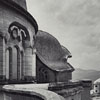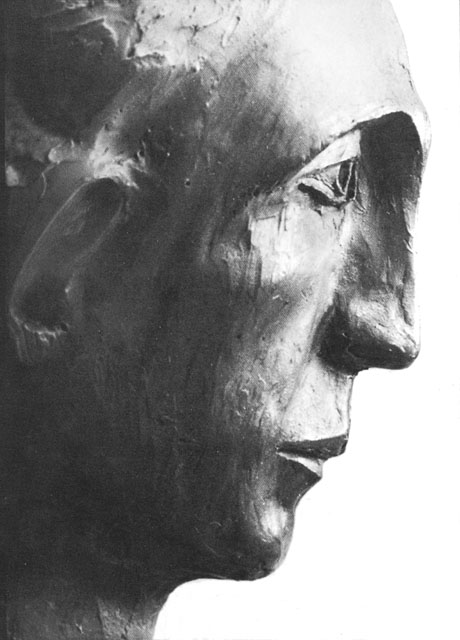
Rudolf Steiner
- Born: February 27, 1861, Kraljevic (Austria)
- Died: March 30, 1925, Dornach (Switzerland)
- Figure: Steiner-512.jpeg
- Scholar, architect, philosopher, playwright, educator.
Founder of Anthroposophy, Eurthmy, Waldorf Education.
> Steiner saw history as essentially shaped by changes formed through a
progressive development of human consciousness. The activity of
individualised human thinking was seen as a relatively recent advance
which led to the dramatic developments of the Renaiasance and the
Industrial Revolution. He saw the realm of the spiritual related to the
realm of the physical through the activity of human thinking. Steiner
characterized his system of Anthroposophy with the following words:
ANTHROPOSOPHY is a path of knowledge, to guide the spiritual
in the human being to the spiritual in the universe...
Anthroposophists are those who experience, as an essential
need of life, certain questions on the nature of the human
being and the universe, just as one experiences hunger and thirst.
(Rudolf Steiner, Anthroposophical Leading Thoughts, 1904)
Early History: Goethean Scholar and Philosopher
> Rudolf Steiner was born on Februay 27, 1861 in Kraljevic (Austria).
His father was a huntsman in the service of Count Hoyos in Geras, and
later became a telegraphist and station-master on the Southern Austrian
Railway.
- He displayed a keen and early interest in mathematics and philosophy -
reading the whole of Kant's Critique of Pure Reason by the age of 14.
- He attended the Technische Hochschule in Vienna, where he concentrated
on mathematics, physics, and chemistry. Steiner earned his doctorate at
the University of Rostock with his disertation, 'Truth and Knowledge'.
- In 1888, he was invited by the Grand-duchess Sophie of Saxony to edit
the complete edition of Goethe's scientific works in Weimar, where he
worked until 1896. During this time he also collaborated in a complete
edition of Schopenhauer's work.
- He wrote his seminal Philisophic work, 'Die Philosophie der Freiheit'
(The Philosophy of Freedom) in 1894. It advocated the posibility that
humans can become spiritually free beings only through the conscious
activity of thinking.
- It was during this period that his work led Frau Forster-Nietzsche
to request him to set the Nietzsche archive in Naumburg in order.
Upon which he subsequently wrote in his book 'Friedrich Nietzsche,
Fighter for Freedom'.
- In 1897, he moved to Berlin to edit the Magazin fŸr Literatur.
- A turning-point came when, in the August 28, 1899 issue of the
magazine, he published an article entitled 'Goethe's Secret Revelation'
on the esoteric nature of Goethe's fairy tale, The Green Snake and the
Beautiful Lily. This article led to an invitation by the Count and
Countess Brockdorff to speak to a gathering of Theosophists on the
subject of Nietzsche. He continued speaking regularly to the members
of the Theosophical Society, eventually becoming the leader of the
German Branch.
- Differences he held from the Theosophists -- i) The lack of cultivation
of any artistic activities within the Theosophical Society, and ii) Some
differences in their views on Christ. The Theosophists held-over older
traditions traditions into the present, and pretty much didn't acknowledge
any particular significance to the historic figure. Nor did he adhere
to their views later when Krishnamurti was hailed as the reincarnation
of Jesus. These factors, and others, led to his founding of the
Anthroposophical Society in Germany in 1912.
Waldorf Education
 > In 1919 Emil Molt, on the behalf of workers of the Waldorf-Astoria
cigarette factory in Stuttgart, invited him to lecture on the topic of
education. This, and subsequent lectures, formed the basis for the
Waldorf School movement - the largest independent schooling system in
the world. There are currently [2001] over 600 schools worldwide, with
over 150 of them in United States, Canada, and Mexico.
> In 1919 Emil Molt, on the behalf of workers of the Waldorf-Astoria
cigarette factory in Stuttgart, invited him to lecture on the topic of
education. This, and subsequent lectures, formed the basis for the
Waldorf School movement - the largest independent schooling system in
the world. There are currently [2001] over 600 schools worldwide, with
over 150 of them in United States, Canada, and Mexico.
Architecture, Eurythmy and Free Spiritual Culture
 > Steiner developed an organic style of Architecture for the building of
the first Goetheanum* in Dornach, Switzerland in 1913, as a 'School
for Spiritual Science'.
- It was subsequently burned down by arsonists on New Year's eve 1922.
Several surrounding buildings which he designed (the Glasshaus, Haus
Duldeck, the Transformerhaus, etc.) survived the blaze.
- Construction of a second Goetheanum building* began on the same site
shortly before he died in 1925. It was concieved as an organic extension
and metamorphosis of the first building, inspiring and pre-dating
architects such as: Le Corbusier, and Eero Saarinen's Kennedy Airport
(1962).
- The Goetheanum was seen as a cultural centre which included activities
in scientific and mathematical research, biodynamic farming, medicine,
and schools of drama, speech, painting, and sculpture.
- It was within the Society that he met his wife Marie von Sivers, with
whom he developed the new artform of Eurythmy -- sometimes referred to
as 'visible speech'. Performances are still held at the Goetheanum in
Dornach, and at various theatres throughout the world. There are now a
number of Eurythmy schools where a full four-year training is given.
Sculptor and Playwright
> Steiner developed an organic style of Architecture for the building of
the first Goetheanum* in Dornach, Switzerland in 1913, as a 'School
for Spiritual Science'.
- It was subsequently burned down by arsonists on New Year's eve 1922.
Several surrounding buildings which he designed (the Glasshaus, Haus
Duldeck, the Transformerhaus, etc.) survived the blaze.
- Construction of a second Goetheanum building* began on the same site
shortly before he died in 1925. It was concieved as an organic extension
and metamorphosis of the first building, inspiring and pre-dating
architects such as: Le Corbusier, and Eero Saarinen's Kennedy Airport
(1962).
- The Goetheanum was seen as a cultural centre which included activities
in scientific and mathematical research, biodynamic farming, medicine,
and schools of drama, speech, painting, and sculpture.
- It was within the Society that he met his wife Marie von Sivers, with
whom he developed the new artform of Eurythmy -- sometimes referred to
as 'visible speech'. Performances are still held at the Goetheanum in
Dornach, and at various theatres throughout the world. There are now a
number of Eurythmy schools where a full four-year training is given.
Sculptor and Playwright
 - As a Sculptor, his primary work was 'The Representative of Humanity'
[figure: RepresentHumanity-640.jpeg] (1922). This enourmous work is on
display at the Goetheanum in Dornach.
- As Playwright, he wrote four 'Mystery Dramas' between the years 1909 -
1913, including ' The Portal of Initiation', and 'The Soul's Awakening'.
They are still performed today.
Weleda, Biodynamic Farming, Camphill, Social-Economics
> A philosophic basis rooted in a practical sensibility yielded
continuations to his work.
- In 1921, pharmacists and physicians gathered under Steiner's
guidance to create a pharmacuitical called: *Weleda*, which now
distributes natural medical products worldwide.
- In 1924, a lecture to a group of farmers concerned about the
destructive trend of 'scientific farming' originated the practice of
Biodynamic Agriculture, which is now practiced throughout much of
Europe.
- In 1939, Doctor Karl Konig founded the Camphill Movement in Scotland
as a place to provide treatment for children with severe learning
disabilities. There are currently more than a dozen Camphill Villages
and eight Colleges providing a home for more than 1000 residents.
- He also developed a new system of Economics called the 'Threefold
Social-Economics'. The three independent members of this system
are: i) the Economic sphere, ii) the sphere of Civil Rights, and iii)
the Cultural sphere. Within this system, the establishemnt of
*Associations* allows an intelligent and human mediation of supply
and demand between consumers and producers.
- To this end, the RSF* (Rudolf Steiner Foundation) was incorporated
in 1984, and provides 'charitable innovative financial services'.
Selected Bibliography
> Amongst two dozen books, and over 6000 published lectures,
some of the more significant works include:
- The Philosophy of Freedom (1894)
- Friedrich Nietzsche, Fighter for Freedom (1895)
- The Theory of Knowledge Implicit in Goethe's World-Conception (1896)
- The Education of a Child (1907) [Waldorf Education]
- Theosophy (1904)
- An Outline of Occult Science (1913)
- Four Mystery Dramas - The Soul's Awakening (1913)
* Attached Figures:
- Goetheanum1-640.jpeg
- Goetheanum1-Elev.jpeg
- Goetheanum2-640.jpeg
- RepresentHumanity-640.jpeg
- Steiner-512.jpeg
- Web Links:
- Anthroposophic Press - Books and Stuff
- eLib - 30 Books and 6000 Lectures
- Anthroposophy.net
- The Original Goetheanum - Website
- Bob and Nancy Waldorf Resources
- Waldorf Schools (AWSNA)
- Steiner College - Waldorf Teacher Training
- Weleda Health Care
- RSfoundation (Economics)
- Camphill - Help for Disabled
---
[Copyleft, June 24, 2001, johnpenner@earthlink.net]
- As a Sculptor, his primary work was 'The Representative of Humanity'
[figure: RepresentHumanity-640.jpeg] (1922). This enourmous work is on
display at the Goetheanum in Dornach.
- As Playwright, he wrote four 'Mystery Dramas' between the years 1909 -
1913, including ' The Portal of Initiation', and 'The Soul's Awakening'.
They are still performed today.
Weleda, Biodynamic Farming, Camphill, Social-Economics
> A philosophic basis rooted in a practical sensibility yielded
continuations to his work.
- In 1921, pharmacists and physicians gathered under Steiner's
guidance to create a pharmacuitical called: *Weleda*, which now
distributes natural medical products worldwide.
- In 1924, a lecture to a group of farmers concerned about the
destructive trend of 'scientific farming' originated the practice of
Biodynamic Agriculture, which is now practiced throughout much of
Europe.
- In 1939, Doctor Karl Konig founded the Camphill Movement in Scotland
as a place to provide treatment for children with severe learning
disabilities. There are currently more than a dozen Camphill Villages
and eight Colleges providing a home for more than 1000 residents.
- He also developed a new system of Economics called the 'Threefold
Social-Economics'. The three independent members of this system
are: i) the Economic sphere, ii) the sphere of Civil Rights, and iii)
the Cultural sphere. Within this system, the establishemnt of
*Associations* allows an intelligent and human mediation of supply
and demand between consumers and producers.
- To this end, the RSF* (Rudolf Steiner Foundation) was incorporated
in 1984, and provides 'charitable innovative financial services'.
Selected Bibliography
> Amongst two dozen books, and over 6000 published lectures,
some of the more significant works include:
- The Philosophy of Freedom (1894)
- Friedrich Nietzsche, Fighter for Freedom (1895)
- The Theory of Knowledge Implicit in Goethe's World-Conception (1896)
- The Education of a Child (1907) [Waldorf Education]
- Theosophy (1904)
- An Outline of Occult Science (1913)
- Four Mystery Dramas - The Soul's Awakening (1913)
* Attached Figures:
- Goetheanum1-640.jpeg
- Goetheanum1-Elev.jpeg
- Goetheanum2-640.jpeg
- RepresentHumanity-640.jpeg
- Steiner-512.jpeg
- Web Links:
- Anthroposophic Press - Books and Stuff
- eLib - 30 Books and 6000 Lectures
- Anthroposophy.net
- The Original Goetheanum - Website
- Bob and Nancy Waldorf Resources
- Waldorf Schools (AWSNA)
- Steiner College - Waldorf Teacher Training
- Weleda Health Care
- RSfoundation (Economics)
- Camphill - Help for Disabled
---
[Copyleft, June 24, 2001, johnpenner@earthlink.net]
| 
